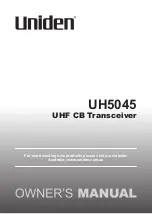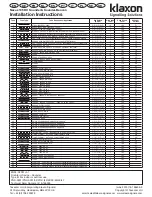
1
1.
INSTALLATION
1.1
Installation Considerations
• Do not paint the radome, radar wave emission may be affected.
• Do not select a location that allows water to accumulate at the base of the sensor.
• Do not cut power/LAN cable or cable assembly when installing.
• Do not block air vent at the bottom of radome.
Connect to a distribution switchboard
• The radar sensor has no power switch. Therefore, it is recommended that you con-
nect the sensor to a distribution switchboard with a switch for power control.
Considerations for selecting a location for installation
• Install the radar sensor on radar arch, on a mast or on an appropriate platform.
For sailboats, a “radome mount” is optionally available for installing the sensor to
a mast.
• This radar sensor emits a horizontal (360°) and a vertical (25°) beam.
Place the sensor where there is a good all-round view with, as far as possible,
no part of the ship’s superstructure or rigging intercepting the scanning beam. Any
small obstruction causes not only shadows and blind sectors, but also the deterio-
ration of antenna ability, such as beam width and side-lobe level. It also reduces the
radar's functionality, for example azimuth resolution, and can cause false echoes.
A mast for instance, with a diameter considerably less than the horizontal beam
width of the radiator, causes only a small blind sector, but a horizontal spreader or
cross trees in the same horizontal plane as the radar sensor would be a much more
serious obstruction; you would need to place the radar sensor well above or below
it. Be sure there are no metallic objects near the antenna. See illustrations on the
following page for typical placement on a sailboat and powerboat.
• Install the radar where large structures, such as a mast, will not be within 1 m diam-
eter from the center of radar.
• Select a location free of structures as much as possible, so as not to cause a blind
sector. A blind sector within the radar beam may prevent proper display of radar
echoes.
NOTICE
Do not apply paint, anti-corrosive sealant or contact
spray to coating or plastic parts of the equipment.
Those items contain organic solvents that can damage
coating and plastic parts, especially plastic connectors.
12.5°
12.5°
12.5°
12.5°








































